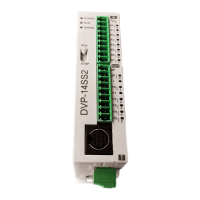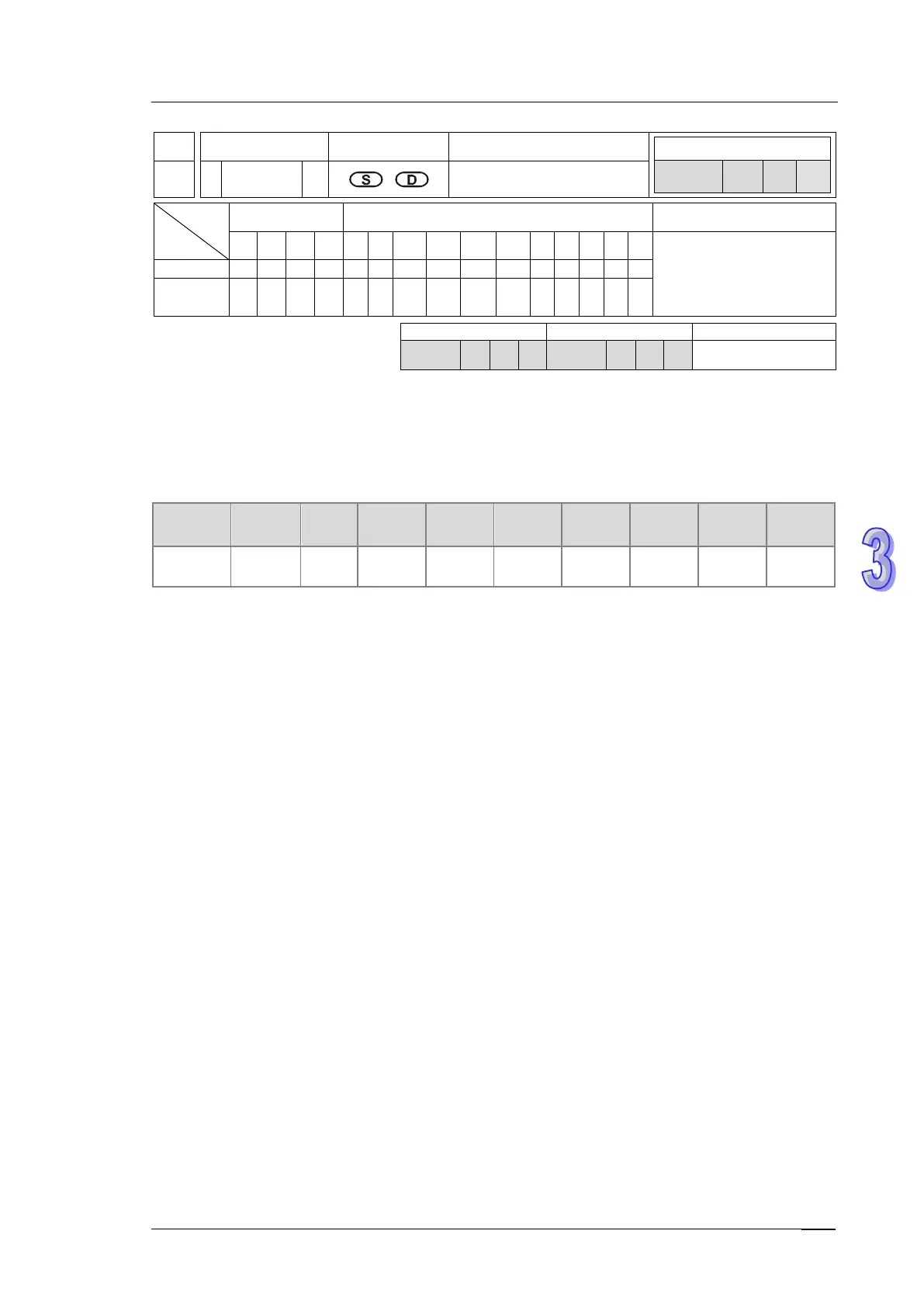3. Instruction Set
API
Mnemonic Operands Function
343 $MOV P
Transferring a string
Type
OP
Bit Devices Word devices Program Steps
X Y M S K H KnX
KnY
KnM
KnS
T C D E F
$MOV, $MOVP: 5~12
steps
D
* * *
SS2
SX2
SS2
SX2
-
Operands:
S:
Data source (string can be used) D: Data destination
Explanations:
1. Availabilities:
Model
/ES2-C
EC5 EC5 ES2-E
SS2 12SE 26SE 28SA2
V3.68 V1.00
V1.00 V1.46
V3.02 V3.62 V2.02 V2.02 V2.90
2. Strings can be used in S, e.g. “abcd”. 16 words of string can be used.
3. This instruction transfers the string in S to D, and adds the code 16#00 to the end of the
string.
4. If the value in S is not in the string format ($), you need to add the ending code 16#00 in the
end. Up to 256 words (including the ending code 16#00) can be stored in S.
5. When the ending code16#00 cannot be found in S for 256 words in a row or even beyond the
device range, the instruction is not executed. And M1067/M1068=ON, the error code
16#0E1A is stored in D1067.
6. When the operand S is not a string and the instruction is executed, the string starting with the
data in the device specified by S
(including 16#00) is transferred to D. When the instruction is
not executed, the data in D is unchanged.
7. If D is not sufficient to contain the string composed of the values in S, the instruction is not
executed. And M1067/M1068=ON, the error code 16#0E1A is stored in D1067.
8. Suppose the operand S is not a string. When the instruction is executed and the first
character in S is the code 16#00, 16#00 is still transferred to D.

